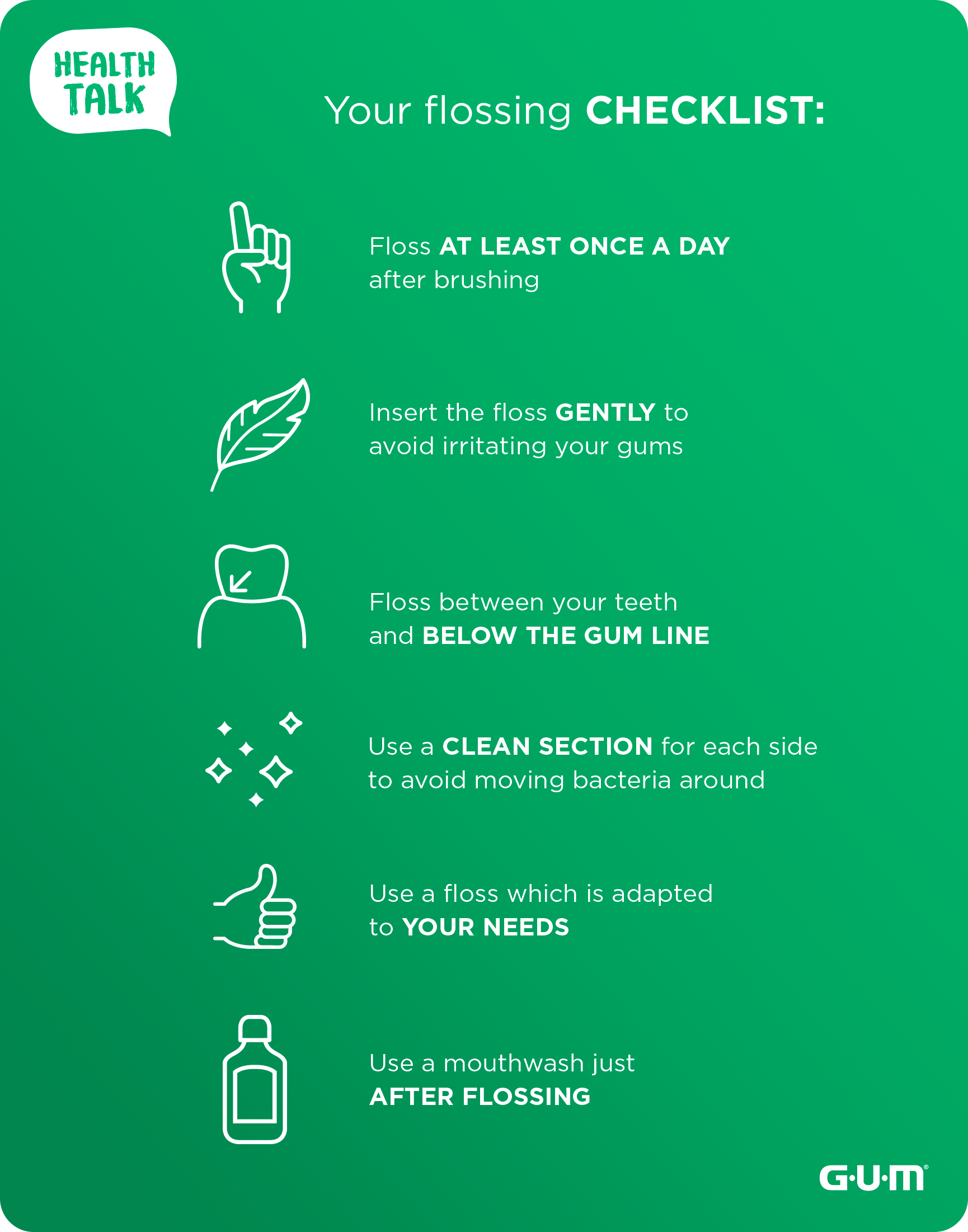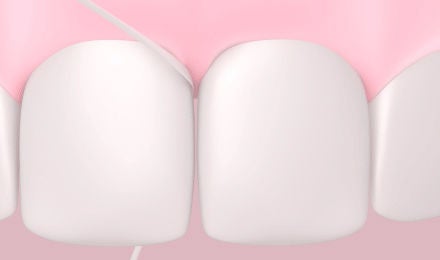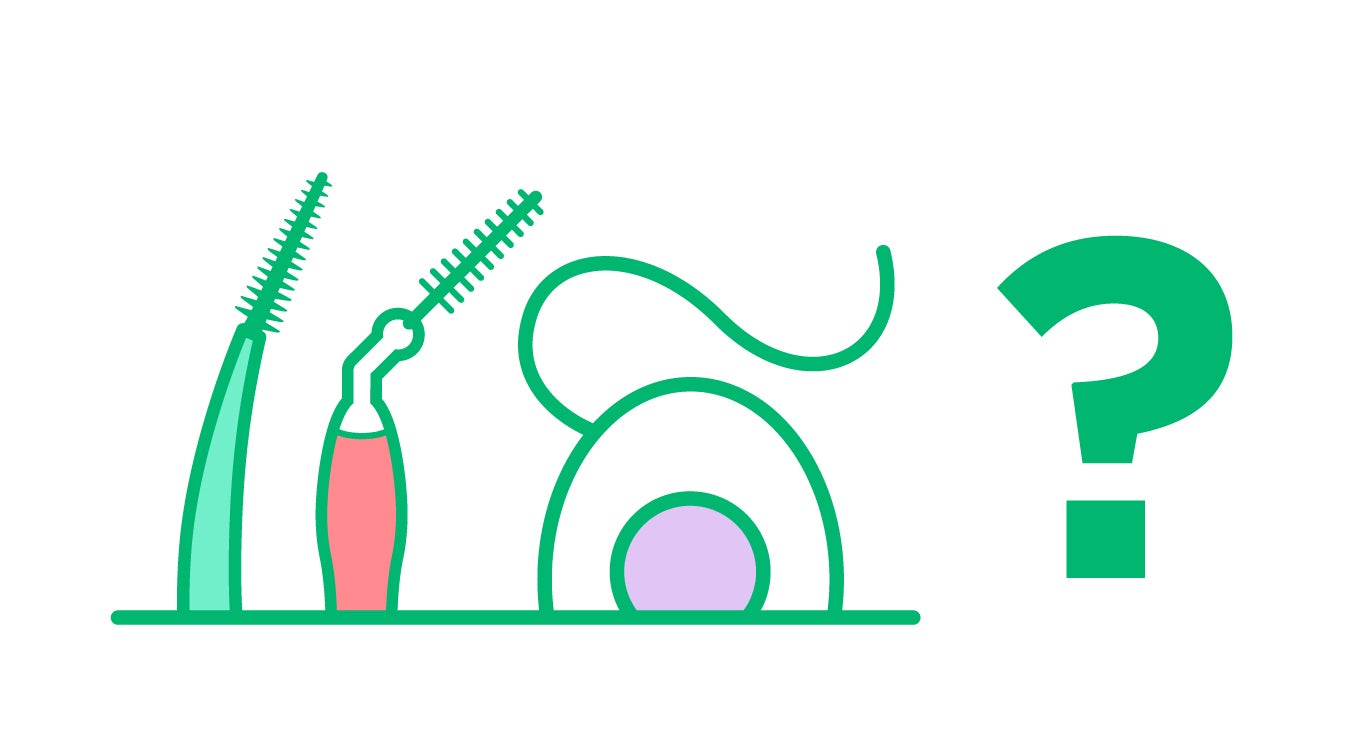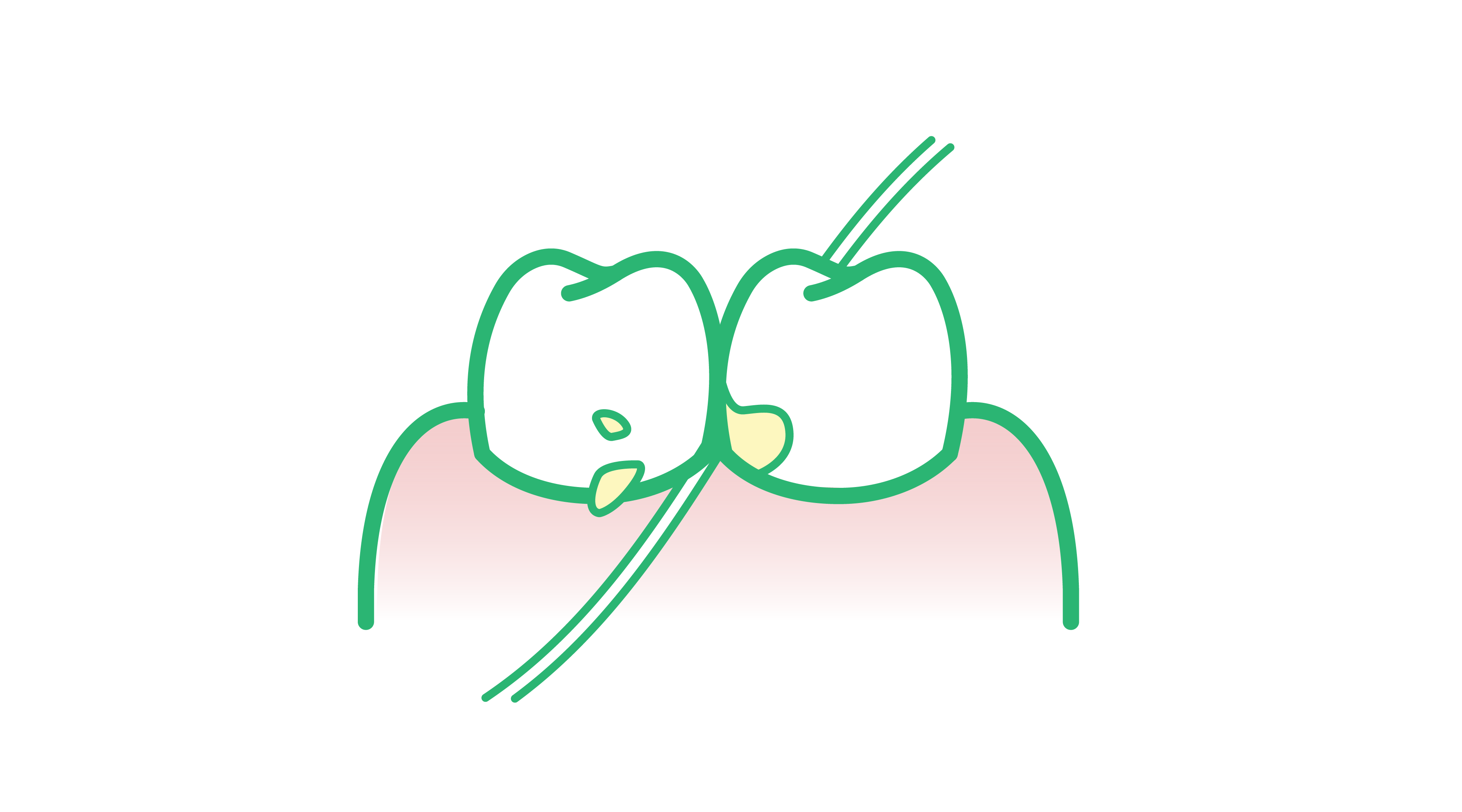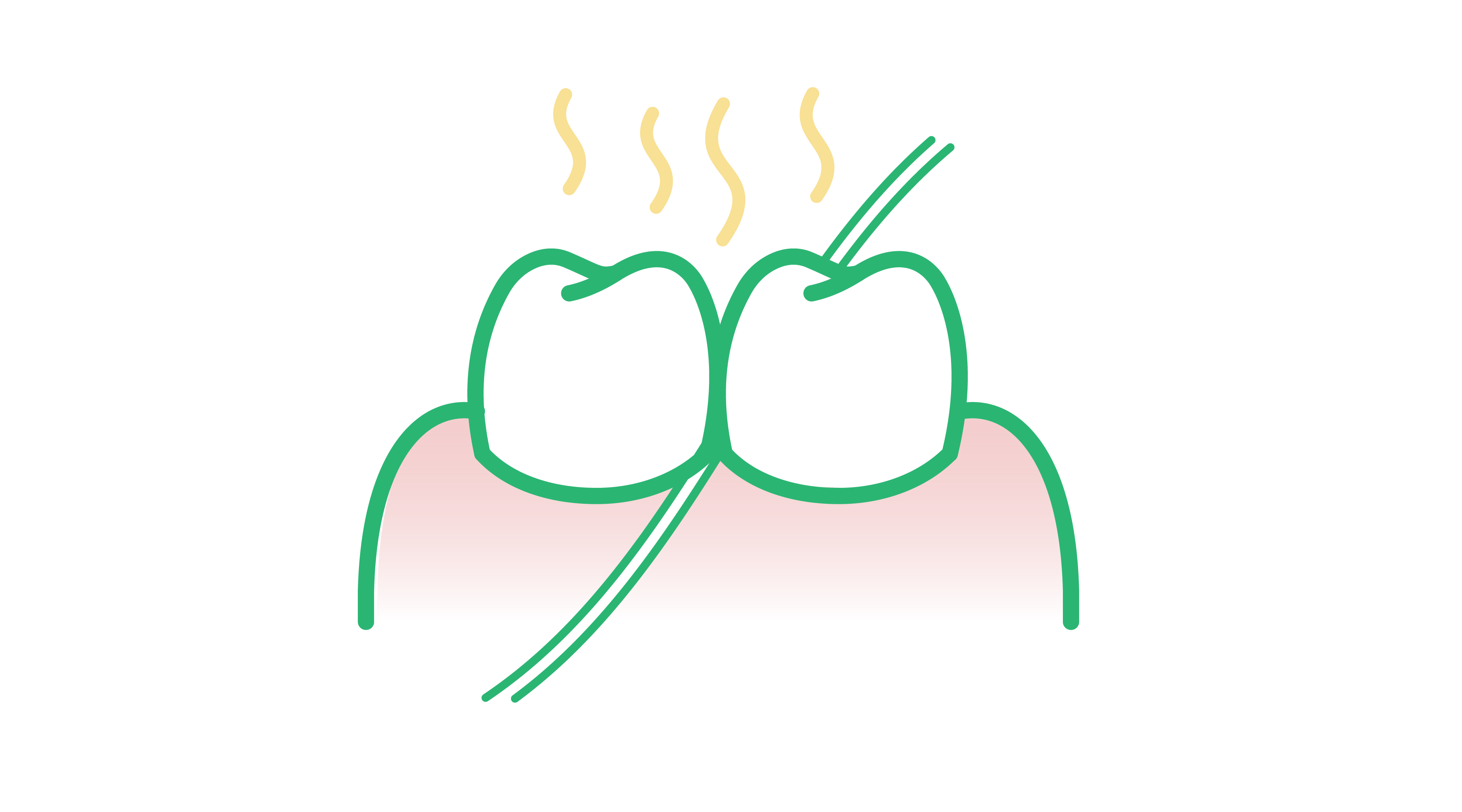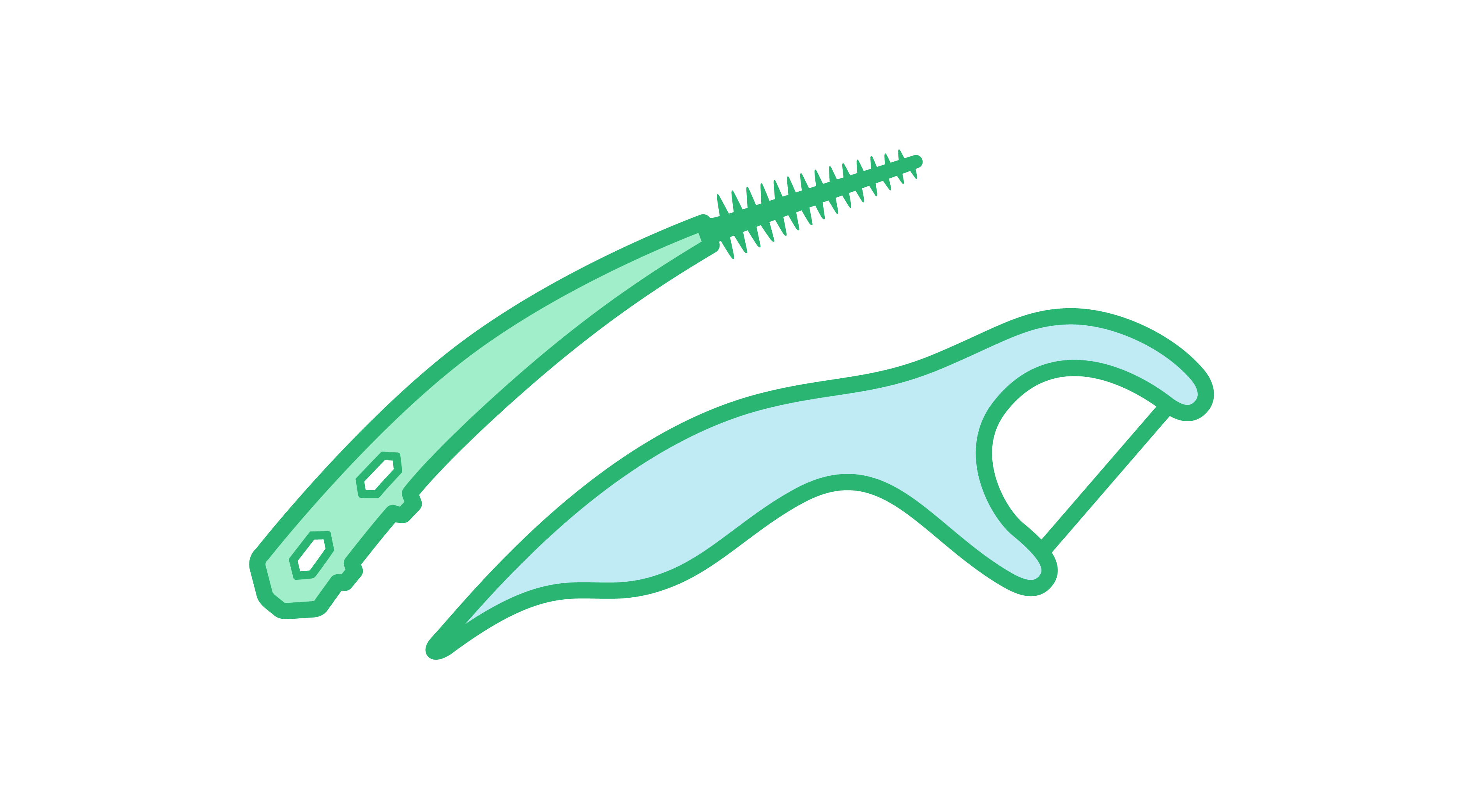How to Floss Your Way to Better Health
Flossing is an important part of oral hygiene, as it helps to remove plaque.

While a toothbrush is great to remove plaque and food particles from most surfaces, it is too big to reach between your teeth where leftover food and plaque tend to accumulate. This is why using floss or another interdental tool is so important. Daily flossing before or after toothbrushing is a great way to ensure you cover and remove plaque from all surfaces working to prevent tooth decay.
Plaque is a sticky biofilm made up of bacteria that forms on the tooth surface, including between the teeth. If not removed properly, it can compromise the health of your gums and teeth, causing gum disease, bad breath, yellow teeth, gum bleeding & recession and potentially lead to overall health issues.
Want to perfect your flossing technique and care for your oral and general health? Watch our video below and follow our tips for a healthy mouth, smile and body! The basics of dental care can benefit everyone but remember, we are all different. This is why you should visit your dental professional twice a year for personalized care and a professional clean.
How Effective Is Flossing?
Flossing plays a critical role in maintaining oral health. It effectively removes plaque and food particles trapped between teeth, areas that are hard to reach with a toothbrush. Regular flossing not only helps prevent tooth decay and gum disease but also contributes to fresher breath and a healthier mouth.
Removing plaque through flossing reduces the risk of tartar build-up, which can lead to more serious gum problems if left untreated. Additionally, flossing helps in preventing gingivitis, the early stage of gum disease, and can play a role in reducing the risk of heart disease and other health issues linked to oral bacteria.
Flossing can be tricky, watch our video to learn how to floss like a "pro"
A FEW THINGS you may be wondering about:
